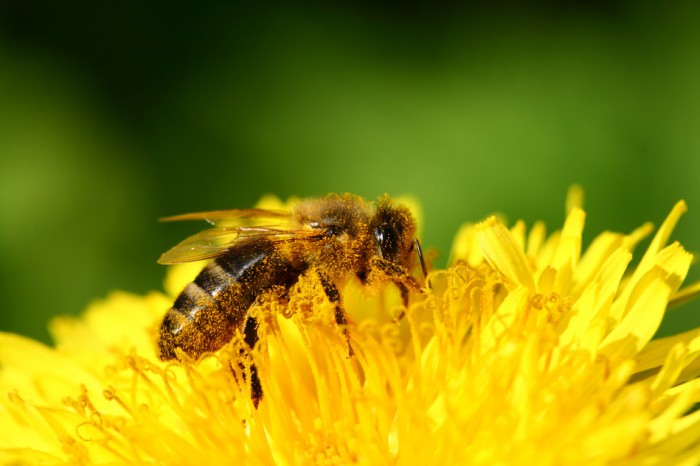Honey bees are the most popular bees of all. However, they actually make up only a small percentage of the total bee species all over the world. Even though they are friends to the planet and are not aggressive in nature, having them around the home can bring uneasiness to a homeowner like you.
Just like what they’re called suggests, these flying insects are responsible for the creation of one of the superfoods on the market — honey. Who doesn’t love honey? It’s packed with nutrients and antioxidants, plus it makes beverages and desserts taste sweet without ruining your health and weight. What’s more, honey bees are known to be the chief pollinators of flowers. This means they help in the multiplication of plants that bear flowers and fruits. It’s for these couple of reasons why it can be quite heartbreaking to kill off these flying insects!
Still an infestation is an infestation, which could cause structural damage to your home as well as put the safety of your loved ones in jeopardy. Especially if you have a small garden filled with beautiful flowers, having a handful of honey bees around might be beneficial. Having a large swarm of them around, however, is an entirely different story.
Before knowing some DIY solutions to getting rid of these flying creatures, you might want to get acquainted with a few really interesting facts about honey bees:
- There are over 20,000 known species of bees on the planet, and only a tiny percentage of that is made up of honey bees.
- The queen bee has a lifespan of 3 to 5 long years. It’s also the largest one in the entire colony.
- Worker bees are the ones responsible for hunting food. They also help pollinate flowers, and are able to carry pollen up to half their own body weight.
- Only a couple of tablespoons of honey can be produced by 48 worker bees in their lifetime.
- The venom in a honey bee’s stinger is actually being used for relieving arthritis and nerve pain in humans.
- Honey bees have 2 sets of wings and 2 sets of stomachs.
- In a hive, there are 3 types of honey bees — the queen, over 1,500 drones (all males and they have a single role: to mate with the queen), and the rest are worker bees (all females and the only ones that sting).
Tips on Eliminating Honey Bees
Before you actually get to the part of exterminating or driving away honey bees, it’s a good idea to know some effective tips on how to keep them from swarming or infesting your home in the first place. Here are some of the best ones:
- Seal all holes that you can find with caulk or wire mesh. Honey bees look for structures or items around your home that have holes on them to nest in. Spring into action and get all of those holes sealed.
- Eliminate clutter around your home. Old or unused appliances and pieces of furniture provide shelter to honey bees, allowing them to thrive and swarm. Besides, removing clutter in the backyard, patio or elsewhere around the home makes your property look cleaner and more appealing.
- In case you have had earlier problems with honey bee infestation, make sure that the honeycomb is removed completely. That’s because honey bees leave scents on their honeycombs, and this can attract new bees to nest and swarm in those once more.
- As a general rule of thumb, your home is prone to future infestations if it once had problems with honey bees. It’s important to do the right preventive measures to save your property from having a honey bee infestation again.
The following are some of the things that may be sprayed on honey bees to rid your home of an infestation:
- Any insecticide meant to exterminate flying insects is capable of killing off bees. Opting for organic insecticides helps save the environment from harm.
- A mixture of water and detergent in a spray bottle is known to be effective against honey bees. However, this may not be the best DIY solution around if you are facing an entire colony.
- Hair spray may be used to protect yourself from a flying honey bee that’s uncomfortably close to you. Certainly, reaching for a can or bottle of hairspray is not the best move if you want to kill off every honey bee in the nest.
- Bleach is an effective DIY honey bee exterminator. It may be used to get rid of honey bees in small numbers.
- Some people recommend pouring gasoline on the nest of honey bees. Although effective, using gasoline is definitely risky so you should forget using it.












